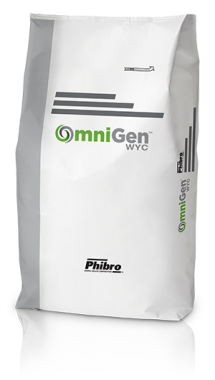Why High Heat and Humidity Mean Lower Production
GLENN HOLUB EXPLAINS THE PHYSIOLOGICAL EFFECTS OF HEAT STRESS
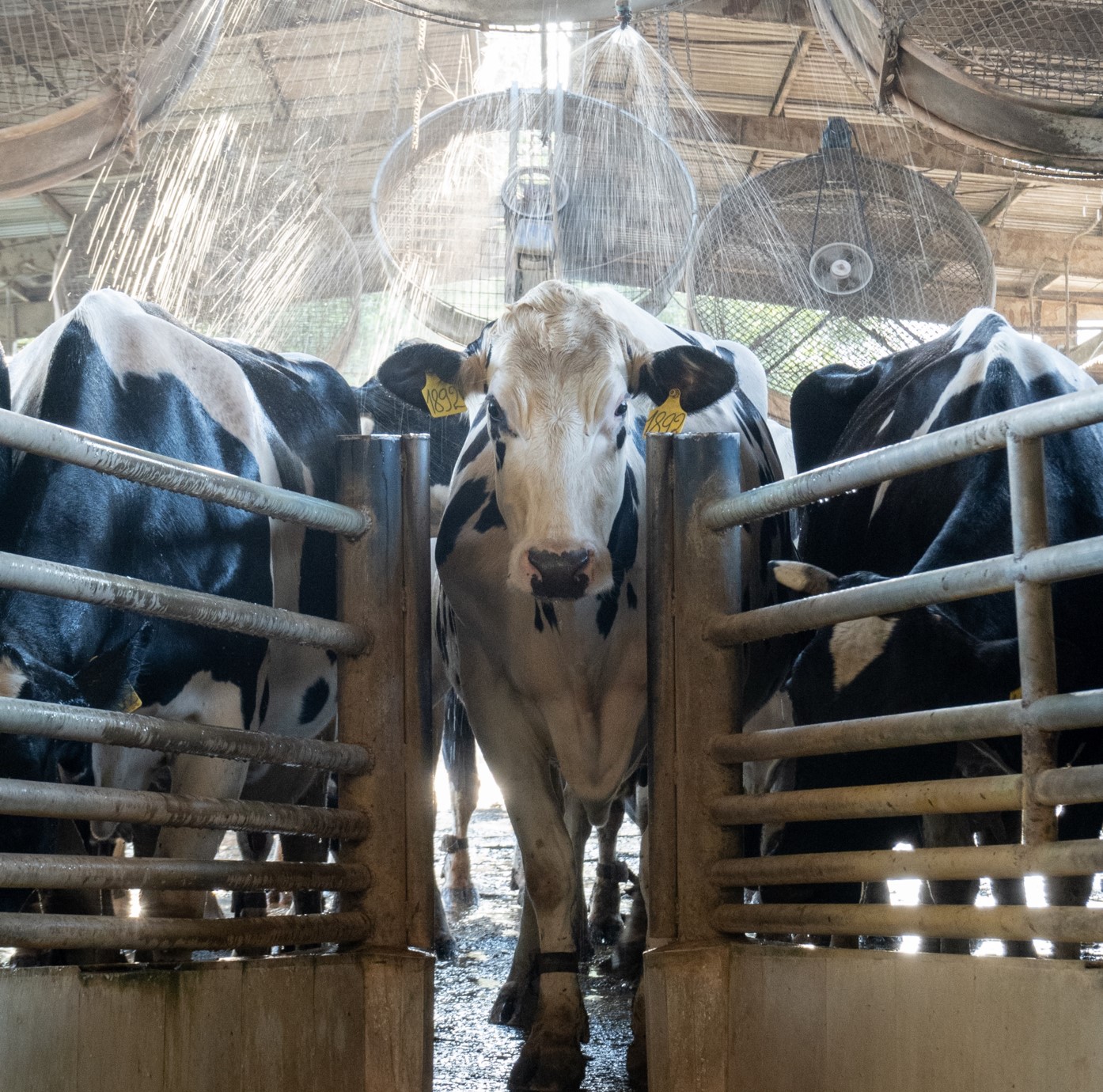
It’s a summer conundrum for U.S. dairy producers; as temperatures and humidity levels rise, dairy cow production decreases. But have you ever wondered what’s going on with a cow physiologically to cause her to make less milk?
“You may have noticed that your most productive cows are often the ones most affected by heat stress,” says Dr. Glenn Holub, Executive Technical Services Manager for Dairy, Phibro Animal Health Corporation. “These highly productive animals have the highest metabolic rates, so heat stress affects them at the cellular level, reducing the amount of production that we’re used to seeing from these animals when they are in a cooler, themoneutral temperature range and not having to expend energy trying to cool their bodies instead of making milk. Once a cow has adjusted metabolically to the heat stress, it’s very difficult to get her back on the lactation curve to continue in a strong manner.”
In periods of heat stress, a cow shifts blood away from her internal organs, which are vital to milk production, to her extremities. This is in effort to get the blood to the skin surface, where it’s able to exchange heat before it returns to the center of her body. This weakens her ability to make milk by taking blood flow away from her liver, intestines, heart and other major, vital organs.
A shift in blood flow isn’t the cow’s only physiological response to heat stress — she also increases her respiration rate to get rid of excess heat. “It’s a simple process in that she’s just taking heat and moving it into the air and away from her body,” says Dr. Holub. “This, too, requires energy — and once she starts panting and once you see her exhaling and inhaling more than once per second, she is really exerting a lot of energy trying to rid herself of excess heat. This also causes her to lose a lot of carbon dioxide from her body, and the byproducts of carbon dioxide support many of her routine systemic buffering functions.”
“Due to panting and drooling during the hottest parts of the day, cows go through a cycle of alkalosis and acidosis through the day and night, as the blood shifts from more acidic to more alkaline,” explains Dr. Holub. “Later in lactation or later in the season after the heat stress has subsided, we sometimes see lameness due to metabolic acidosis and Subacute Ruminal Acidosis (SARA) which causes laminitis.”
Holub advises producers to monitor breathing rates. “When you see a cow get to a respiration rate of 120 breaths per minute, she’s on the verge of having a severe crisis in her body,” he warns. He says that there are phone apps and devices designed to help producers count breaths during a 20-second interval. (Once the 20 seconds is up, simply multiply the number of breaths times three to get respiration rate per minute.)
“Any time a cow goes over 60 breaths per minute, she’s feeling the effects of heat stress, because a normal respiration rate is 30-40 breaths per minute,” he says. “Respiration rates of 80 or 90 show that you’re not effectively cooling your cows.”
The Effects of Heat Stress on Milk Production and Reproduction
The physiological inefficiencies caused by heat stress affect a cow’s production — and the declines can
be significant. “Milk losses can take a steep decline during hot months and can go down by as much as 10, 15 or even 20 pounds per cow each day when they’re not able to sufficiently cool their bodies,” Dr. Holub says. “Sometimes, we get small, jagged spikes of production that fluctuate up and down from day to day, but once nighttime temperatures don’t allow a cow to cool off, you’re really going to see daily drops in production, particularly with a cow that’s producing well over 100 pounds of milk.”
Mid- to late-lactation cows, which are already on a steep downward production trend, are unlikely to recover much milk at the end of the summer. Holub reminds producers not to forget their prepartum cows which, although not operating at the metabolic rate of milk producers, still suffer the effects of heat stress. “Often, they’re in the dry pen farthest away from the parlor and further from sight, but gestationally, they have a 90-pound conceptus in them that’s absorbing physiological energy to be kept alive,” says Dr. Holub. “It’s not uncommon for cows to calve a week or two earlier than their due date, and this is largely due to the influence of heat stress — then you’ve got a cow that hasn’t finished preparing her udder for the onset of lactation and you have a calf that’s stressed when it’s born.”
Prolonged or severe heat stress can also affect developing embryos. “Many producers report that their herd’s reproduction rates wane rapidly in periods of heat stress,” says Dr. Holub. “Once the cow’s body gets over 102.4 degrees Fahrenheit, the early embryos — those that are just a few cells in size — have a hard time surviving.” Producers may not realize a cow has conceived because the embryo dies and the cow cycles back in the next heat cycle, according to Dr. Holub. He says that a cow’s number of “days open” also increases significantly during the summer months, when a dairy’s conception rates may drop into the single digits.
Despite the physiological effects that heat stress has on dairy cows’ comfort, reproduction and production, there is reason for optimism — by offering shade, water, fans or misters, in combination with a heat stress management solution like OmniGen® nutritional specialty product, producers can help alleviate the effects of heat stress and lower respiration rates of their dairy cows.
For more information on heat stress, contact your local dairy advisor or visit www.theOmniGenDifference.com. For additional insights from Dr. Holub, download a free webinar, “Dairy’s Most Profit-Draining Challenges: Heat Stress” on the Phibro Academy web site.
OG350722GLB ©2023 Phibro Animal Health Corporation. Phibro, Phibro logo design, Healthy Animals. Healthy Food. Healthy World. and OmniGen are trademarks owned by or licensed to Phibro Animal Health Corporation or its affiliates.
Dairy Cattle Products
Study examines the effects of nutritional immunomodulation and heat stress during the dry period on the next lactation performance of dairy cows.1





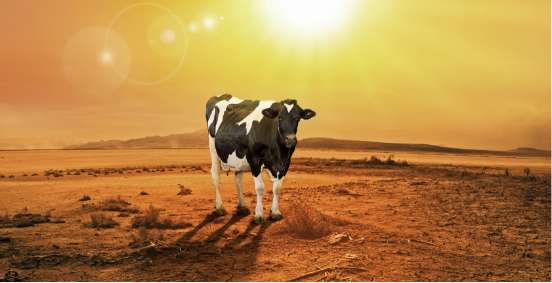
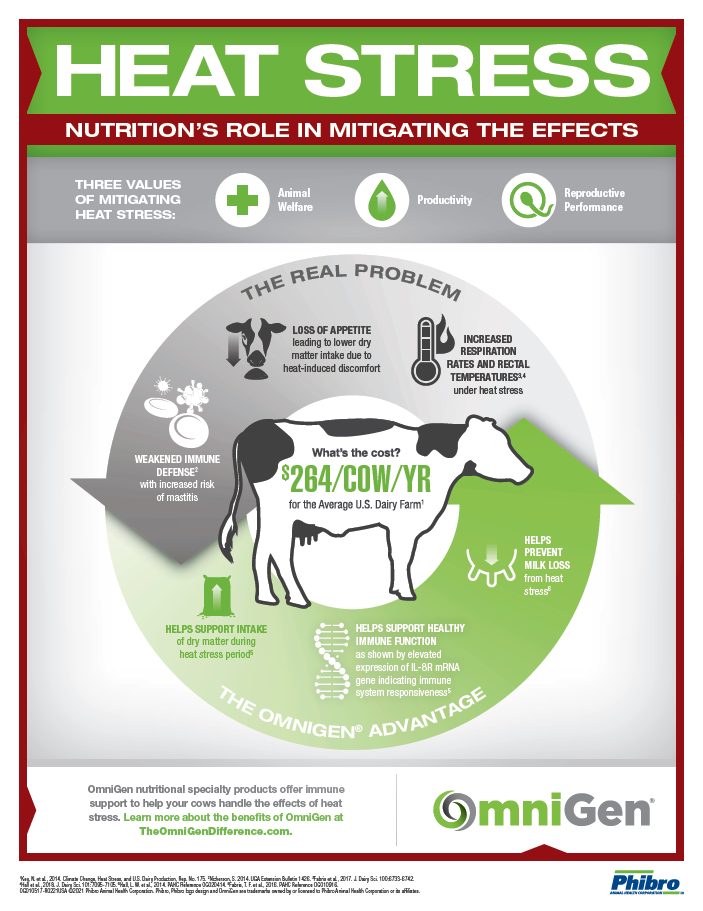
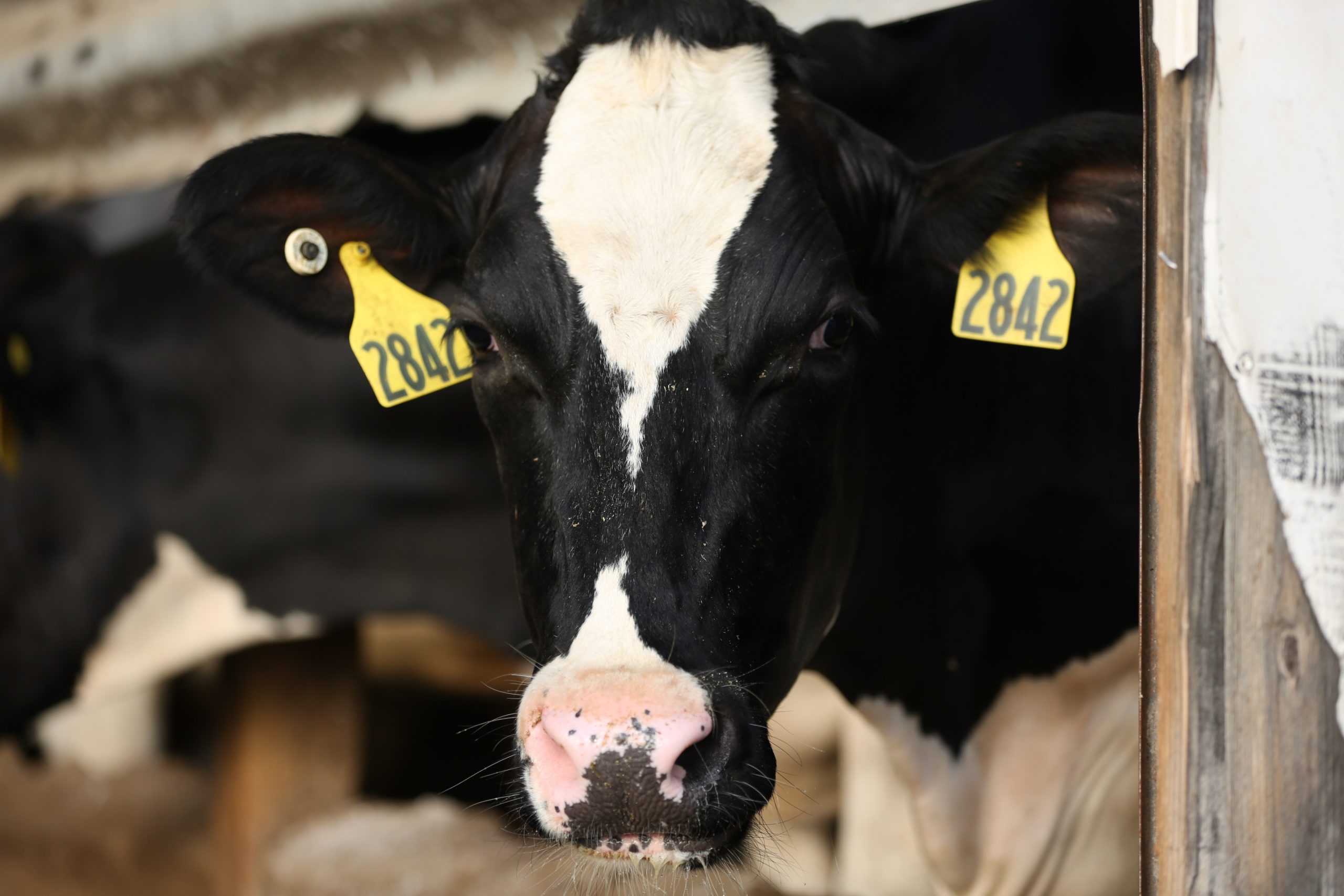
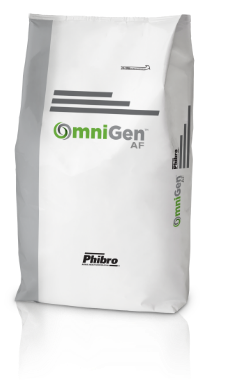
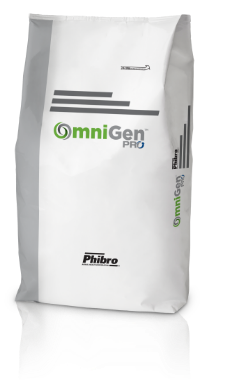
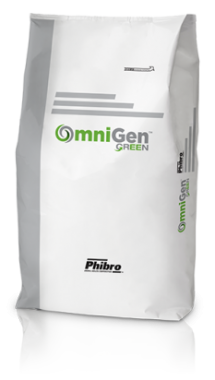
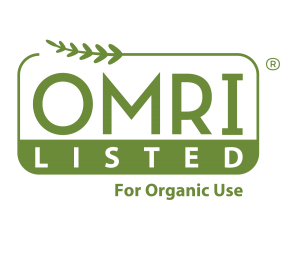 OmniGen Green is Organic Material Review Institute (OMRI) listed.
OmniGen Green is Organic Material Review Institute (OMRI) listed.